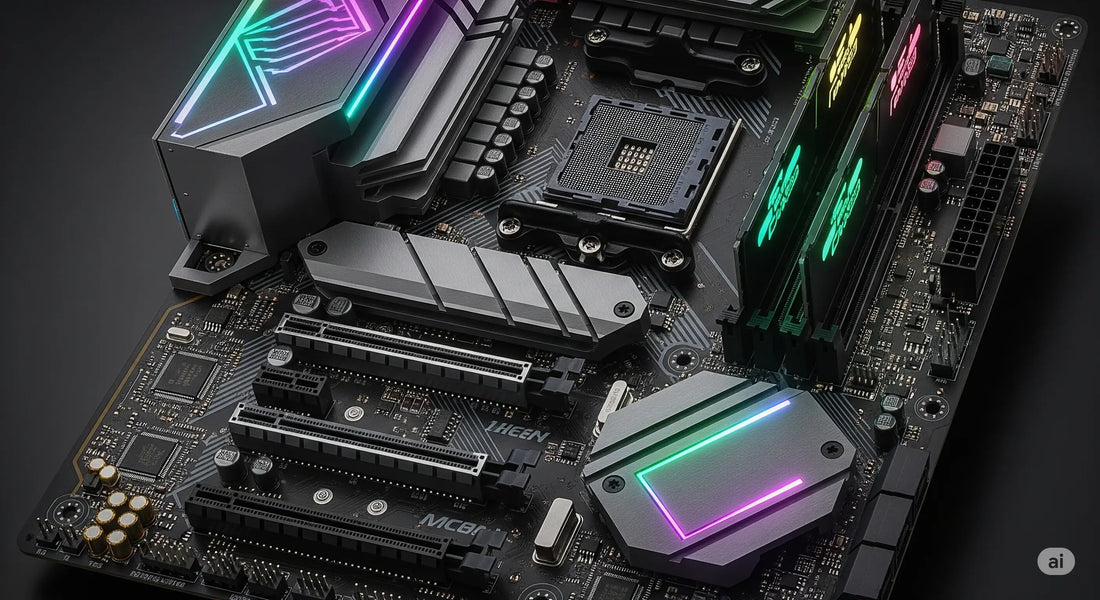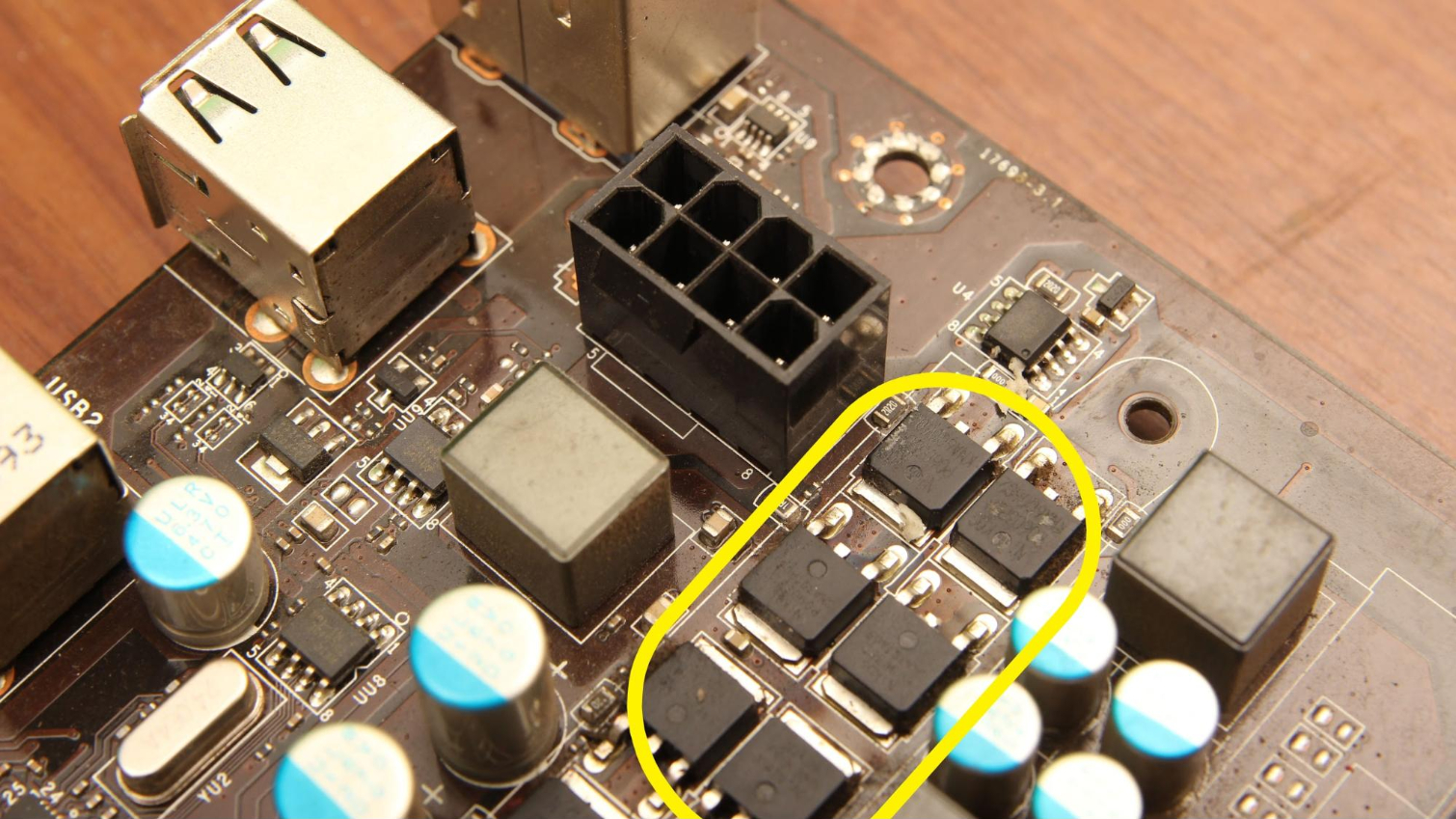
Unveiling the VRM: The Electrical Heart of Your Motherboard
Unveiling the VRM: The Electrical Heart of Your Motherboard
Are you playing games or working with so many windows open that it looks like a digital maze? Sometimes a window can get lost in the far reaches of your screen, but don't worry, we have the perfect trick for that!
In the gaming world, we worry about the processor (CPU), the graphics card (GPU), and the amount of memory (RAM). But there's an unsung hero on your motherboard that works hard to keep your PC's heart beating at the right rhythm: the VRM . VRM stands for Voltage Regulator Module . In simple terms, the VRM is like the "heart" of your motherboard, controlling the power going to your processor and other essential components. It ensures that your CPU receives the exact amount of power to run without overheating or crashing. [1, 2]
The VRM Orchestra: Meet the Musicians!
A VRM is not a single piece, but a set of components that work together to regulate voltage. Think of it like an orchestra, where each musician has a crucial role. Meet the band:

The Orchestra Maestro: PWM Controller
The PWM (Pulse Width Modulation) controller is the conductor. It receives the power entering the motherboard and dictates the rhythm and "intensity" that each component needs. [3, 4] It doesn't control the power directly, but gives instructions so that subsequent components know what to do, ensuring that the processor receives the right voltage at the right time. It is the most intelligent part of the VRM, and the quality of its "conductor" determines the accuracy and stability of the entire system.
:max_bytes(150000):strip_icc():format(webp)/motherboardfanconnector-23b3a78feefc47d7b37ef567482ad0e3.jpg)
The Guardians of the Flux: MOSFETs
MOSFETs (Metal-Oxide-Semiconductor Field-Effect Transistors) are the "guardians." They are electronic switches that rapidly turn on and off to convert the voltage coming from the controller. [5, 6] They take the high voltage from the power supply and transform it into a lower, more stable voltage for the CPU. The efficiency and temperature of these components are crucial, as they generate a lot of heat while converting energy. Having good quality MOSFETs means less wasted energy and less overheating, which is vital for those who like to overclock. [7]

Noise Filters: Chokes
Inductors (also known as chokes ) are the VRM's "noise filters." They look like small black blocks or cubes. Their function is to smooth the flow of power and filter out any electrical noise that may come from the MOSFETs. [8] Think of them as protectors that ensure that power reaches the processor cleanly and consistently, without spikes that could damage the chip.

The Backup Power Bank: Capacitors
Capacitors are the "backup power bank." They store a small amount of energy and release it when the voltage starts to drop, helping to stabilize the power supply. [9] They ensure that the voltage reaching your processor is always the same, even during periods of high demand, such as when you open a demanding game or overclock. Without them, the power could fluctuate, causing instability or crashes in your PC.

The quality and quantity of these components are what define the power "phases," a term you might see on high-end motherboards. More phases generally mean a more robust VRM, which can deliver power more efficiently and with less heat, which is excellent for overclocking. [10]
What do the Energy Phases Mean?
A "phase" is a complete set of components (Controller, MOSFETs, Inductors, Capacitors) that work together to deliver power. Instead of a single set supplying all the power at once, a multi-phase system (e.g., 8+2) divides the work. [11] This reduces the workload and heat generated by each component, resulting in greater efficiency and stability. [12] It's like having multiple pizza delivery drivers instead of just one: the work is distributed, and delivery is faster and more reliable. For the gamer seeking maximum performance, a VRM with more phases is an indicator of a higher quality motherboard, prepared for heavy overclocking and high-power CPUs.
Conclusion: The Hidden Hero of Your Setup
The VRM is the unsung hero of your PC. It works silently, ensuring that the heart of your system receives the perfect power to run demanding games and software smoothly. Understanding how it works and the importance of choosing a motherboard with a good VRM is key to ensuring the stability, security, and longevity of your hardware. The next time you're building a PC, give this vital component the attention it deserves. Your processor and your gaming experience will thank you!
Sources:
- EKWB. What are MOSFETs and why should you keep them cool?
- Lenovo. VRM Explained: Protect Your PC's Vital Components
- Dellos Informática. VRM - It's more important for your processor than you think.
- PcComponentes. What are the VRMs? It's essential on your baseboard for good overclocking.
- EKWB. What are MOSFETs and why should you keep them cool?
- Jotrin Electronics. Everything You Need to Know about Voltage Regulator Module (VRM)
- Cadence. VRM MOSFET Temperature and How to Regulate It
- Xotic PC. Motherboard VRMs: What are they and why should you care?
- EasyPC. What is VRM on Motherboard? (Guide to Voltage Regulation)
- Logical Increments. Motherboard VRMs: What are Power Phases, and How Many Should I Have?
- Reddit. 4+1 or 8+2 power phasing, does it actually matter?
- MSI. MSI Motherboards Powerful VRM Solution.
